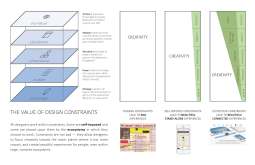OK, well not really “home”, but since the East Coast was the first place I lived in the U.S. and for the longest time (13 years), I identify with it more than any other place.
Anyway … in June I left USAA (and my awesome team there) after 4 years and moved to New York to head the design team for Capital One’s commercial bank.
It’s an exciting time to join C1 and the commercial team because there is a huge up-swelling of interest and support for design-centric approaches to problem solving across the entire company. But even more important to me is the “do the right thing” attitude that permeates this organization.
Last week in Dallas I was privileged so see Rich Fairbank, our founder and CEO, speak for about 8 hours on the strategy for the company. His most powerful moment (and there were many) came with this (oft-repeated) line “Doing the right thing cost, and it cost, and it cost … until one day it didn’t”. He backed this up with many examples of how C1 has done the right thing for clients (reducing fees, working to increase rewards redeemed, etc.) which cost the company money and reduced profits in the short-term, but which ultimately contributed to increased client loyalty, usage, and profit in the long-term.
It’s a great example of a win-win scenario on how a for-profit company and its clients can exist in a harmonious, symbiotic relationship. And a fascinating study on how an intensely analytically company can also make huge business decisions based on “how would you want your mother to be treated?” (another Rich quote) and have faith that the economics will work out.
Fun times ahead for me in NYC 🙂

